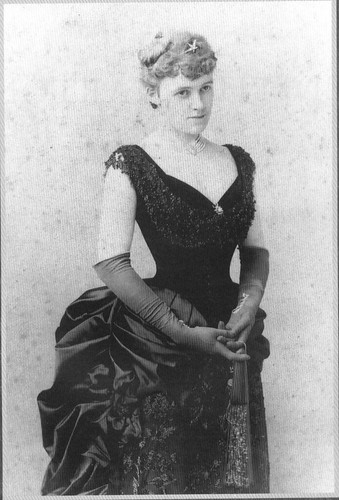
Since I last updated you, we've been shifting from the feminine to the masculine. Jack London took us on a trip through the shivering arctic and showed us the futility of man's venture to educate himself in his own nature in "To Build a Fire". Stephen Crane spouted a little on the subject of blind faith and then took us into a sinking ship to witness the trappings of social status in the face of danger and the equality of all men in the moments before death.
These authors hypothesize on the futility of man's connection to and understanding of nature. Both stories focus on the moment "when it occurs to a man that nature does not regard him as important, and that she feels she would not maim the universe by disposing of him" (The Open Boat, Ch VI). Of course, even though they might both realize the futility of connecting with nature, these men aren't the type to give up on trying.
Above, you can witness a bit of these gentlemen in all their masculine glory. See Stephen in his uniform, in dress duds, and (OH!) an explorer's fedora. Jack, surrounded by the nature he focused on in writing, looking a bit uncomfortable in a tie, and then- well- you can see for yourself.
Poor Teddy Dreiser, Mr. "Free to Die", is a bit bummed to be left out of the photo shoot. (See to the right.) But, I'm sorry, Teddy. Peter P

an said it much better than you: "
To die will be an awfully big adventure." And that ever-young sprite didn't waste the first 60 of his years hoping that things would get better soon. He didn't hide in his hut. He sought out the pirates and mermaids even knowing that a battle might ensue. You've gotta work harder to join the lodge with Jack and Stephen.
After spending several days delving into some literature that we might have found in a 1903 edition of Maxim, we're now ducking into another corner of literature populated by "minority" authors. Yes, we've investigated the oppression of the female contingency with Wharton, Gilman, Glaspell and Chopin and their lives, admittedly, were not easy. But they still had a right to the American Dream from day one.
"Eurasian" author, Sui Sin Fe

n AKA Edith Maude Eaton wrote the ironically titled "In the Land of the Free" about the experiences of a Chinese-American couple trying to obtain the rights to their only child, born back in China for cultural reasons. Our protagonists came to America because of the opportunities the country would offer them. Despite their belief in the freedom the United States is supposed to give them, their newborn child is inexplicably taken from their arms. The government will not believe that the child is really theirs- At least not on just their "word". Even the lawyer who finally takes their case, and gets the child back into their lives almost a year later, hardly hesitates to strip them of all the wealth they have. He fills his pockets with their family heirlooms in order to pay his fees.
However, this story isn't a
direct attack on America's treatment of immigrants. Sui Sin Fen's character's never directly condemn the government officials for their actions. The narrator never makes any subjective commentary on the injustice of the situation. The reader is left to be the judge. Still, there is no question at the end of the story what way the reader will be swayed. All of my sympathy lies with this poor mother, robbed of not only a year of her child's life but his loyalty and native tongue.
W.E.B. Du Bois' account of Booker T. (Taliaferro) Washington in "The Souls of Black Folk" takes a much more direct approach to the persuasive essay. His strong, summoning voice shares historical account alongside emotional rhetoric to stir the opinions (and apologies) of the reader.
Though I found the entire excerpt moving, there is a section in these writings that particularly touched me. Du Bois wrote,
"To be a poor man is hard, but to be a poor race in a land of dollars is the very bottom of hardships. He felt the weight of his ignorance, -- not simply of letters, but of life, of business, of the humanities; the accumulated sloth and shirking and awkwardness of decades and centuries shackled his hands and feet" (1733).
This beautifully crafted sentence STILL aptly describes the difficulties that many African-American families face in today's society. No matter how equal the rights given to a black man, there continues a struggle to escape the shackles of slavery. Now, you can see this depicted in years and years of seemingly inescapable generational poverty burdening so many African American households. Du Bois suggests that in order to loosen these chains a concerted effort must be made to undo the "ignorance" which slavery pummeled in this instinctively spirited, strong and wise race of men. It is not enough to be apologetic for the crime and atrocities of slavery. It is this country's responsibility to strive to undo the harmful generational disfigurement it caused an entire race of American people.














